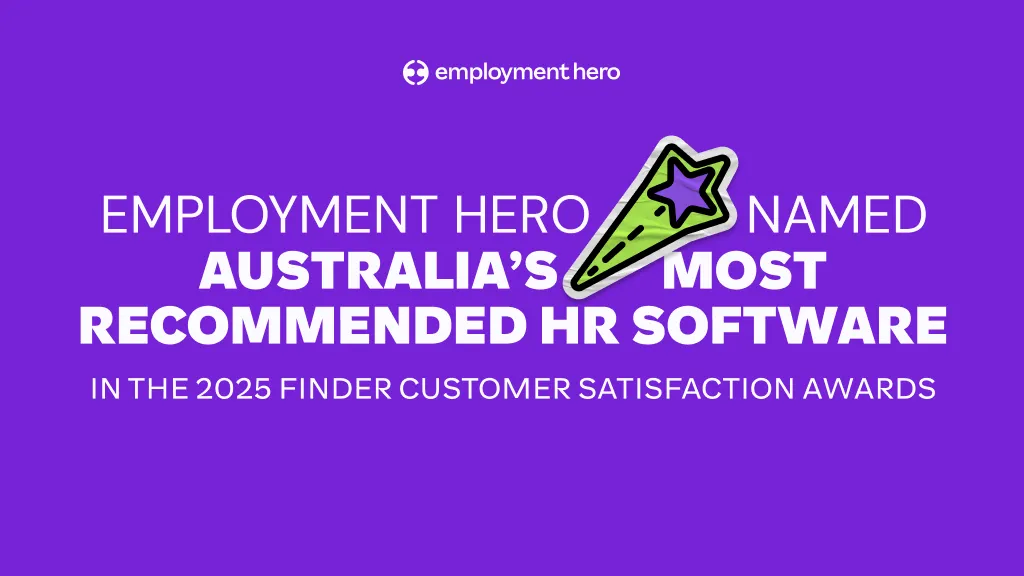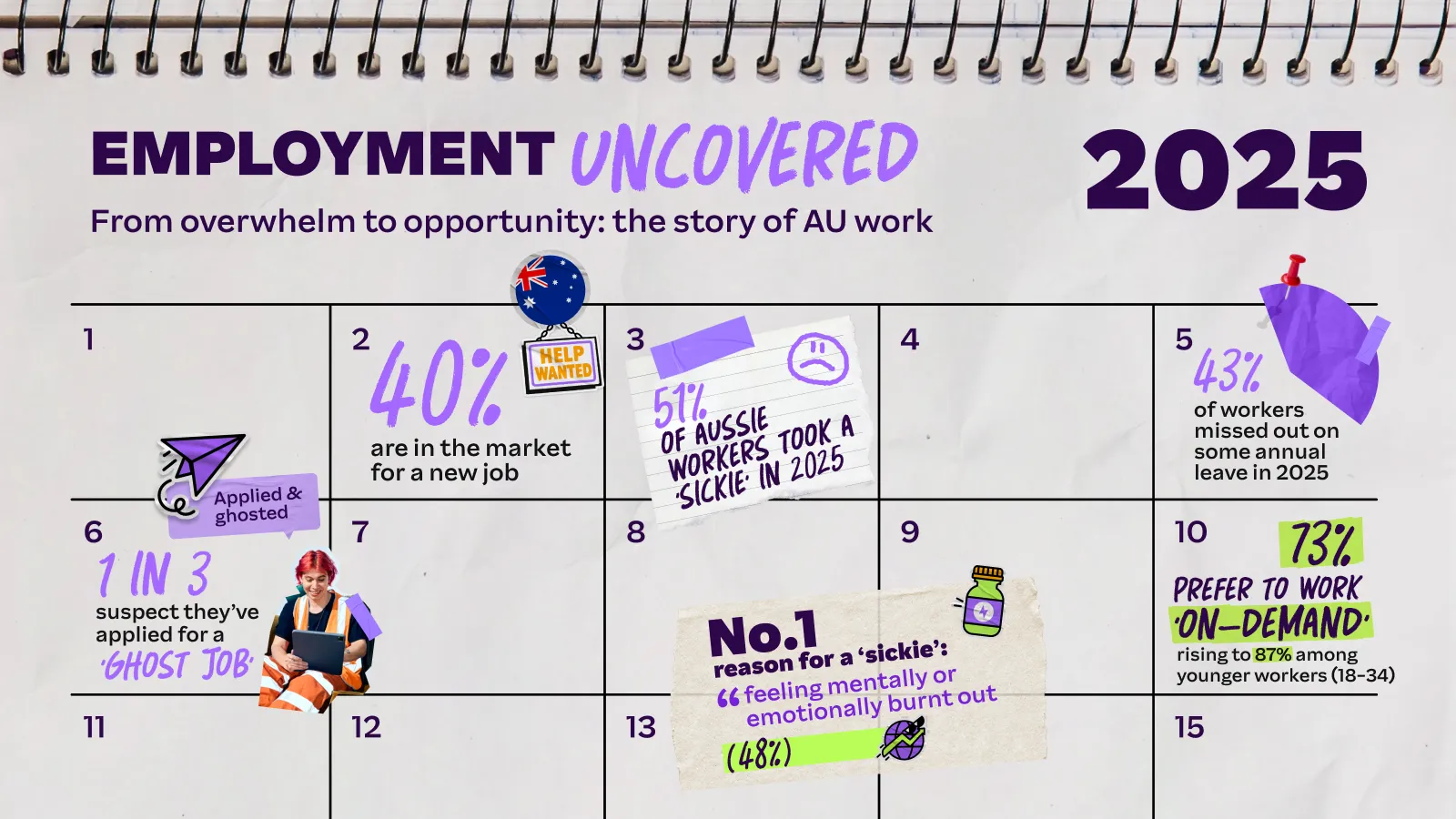What is a notice period and how does it work?
Let’s unpack this important part of the employee offboarding process.

A resignation notice is a significant event for both the employee and employer. For employees and HR managers, immediate action will need to be taken to secure a replacement or alternative arrangement to pick up the leaver’s workload.
They will also need to quickly transfer the leaving person’s knowledge back into the business.
Notice periods provide a safeguard for the employer so that they have adequate time to complete these important processes. For employees, they provide a period of time to transition out of their role and security by having a set period of employment after they have resigned or been terminated.
Disclaimer: While due care has been taken in preparing the document, no responsibility is accepted by the author for the accuracy or suitability of the information contained. All liability is expressly disclaimed for any loss or damage which may arise from any person relying on, using or acting on any information contained therein.
What is a notice period?
A notice period, or a ‘period of notice’, is an essential part of the employee offboarding process. It is the period of time between when an employee submits their resignation, or when they have been dismissed by an employer and their last day at the business.
To ensure the smoothest transition you should be using offboarding software, and it can also be beneficial to use a resignation announcement email template. Make your employee’s departure a smooth process with this easy-to-use announcement of employee leaving the company email template.
Notice periods can be confusing, as their terms are not standardised across all roles or types of employment. The length and type of notice period an employee or employer is entitled to give depends on varying factors. Let’s unpack them!
How much notice do employees need to give?
The required notice period an employee needs to give depends on their award, enterprise agreement and other registered agreement or employment contract. Employees should check their award or employment agreement documents to find how much notice they have to give.
Generally speaking for full-time staff, when a notice period is required, it’s usually between 2-4 weeks.
When an employee is hired under an award and agreement-free wage and condition, they may not be required to give a notice period, depending on what’s laid out in their employment contract. If there is no specificity around notice of resignation, the employee may be required to give their employer a ‘reasonable notice period’.
Although it is not a legal requirement for employees, they should submit a resignation letter that includes their notice period to their employer. This provides a clear record for both parties.
How much notice do employers need to give?
The amount of notice that an employer has to give their employee depends on the length of their employee’s tenure with the business when the employee’s employment ends. The notice period system that employers must work from is called the ‘minimum notice period’.
What is a ‘minimum notice period’?
Minimum notice periods are the legal notice periods that employers must give employees when they are being dismissed. An employment contract can’t provide for less notice than the legal minimum set in awards and agreements.
The notice period commences the day after the employer informs the employee that they want to end their employment and ends on the final day of their employment.
To help manage this process effectively, an employee departure checklist can be invaluable. Make sure you cover the essential steps with this detailed employee offboarding checklist.
The minimum notice periods set out in the Fair Work Act are as follows (although some modern awards provide for more generous periods of notice);
- For employees that have been employed one year or less; one week
- For employees that have been employed between one to three years; two weeks
- For employees that have been employed between three to five years; three weeks
- For employees that have been employed for more than five years; four weeks
If an employee is 45 years or over and has at least two years of continuous service, you must add an additional week to the above periods of notice.
There may be penalties under the Fair Work Act for insufficient notice.
Are there any circumstances where an employer needs to give more notice?
Longer minimum notice periods can apply if your employee is covered by an award, employment contract, enterprise agreement or other registered agreement. Speak with an employment law specialist if you are unsure what your employee’s minimum notice period is.
How must employers give notice to their employees?
If an employer wants to end a team member’s employment, they must generally give the employee written notice of their last day of employment.
This notice can be given by; delivering it personally or sending it to an employee’s last known address. If the employee agrees, it may be sent by email or text message.
Terminating, firing or dismissing an employee – for whatever reason – can come with many compliance complexities. We always recommend speaking to an employment law specialist to avoid issues with unfair dismissal and the Fair Work ombudsman.
Can I pay the employee instead of having them work their notice period?
An employee can continue to work during their notice period, or an employer can pay it out to them (this is known as pay in lieu of notice). The employer could also organise a combination of the two.
If the employer pays out the employee’s notice period, the payment must be equal to the full amount that the employee would have been paid had they worked until the end of the notice period. This includes; incentive-based payments and bonuses, loadings, monetary allowances, overtime, penalty rates and any other separately identifiable amounts.
If the employer pays out an employee’s notice period, the employment ends on the date the payment is made. The employee doesn’t remain employed for the minimum notice period or accrue entitlements like annual leave.
Do notice periods include public holidays?
Public holidays are absorbed by the notice period; they do not extend the notice period. For example, if an employee’s notice period takes place over the Easter break when there will be two public holidays, the notice period does not need to be extended by two days.
Can an employee take annual leave during their notice period?
An employee can take annual leave during their notice period if they come to an agreement with their employer. An employer, however, cannot force an employee to take annual leave during their notice period unless they want to make a payment in lieu of notice instead.
Some employers also ask their employees to take ‘gardening leave’. This is usually where the employer asks the employee to spend their notice period at home, but is directed not to perform any work, not to attend the workplace and not to contact any customers.
The employee is technically ‘working’, just not carrying out any duties related to their role. This is so that the business can protect confidential information from the leaving employee before they move on to a new business.
Can an employee take sick leave during their notice period?
An employee can take sick leave during a notice period, but they may have to give evidence if an employer asks for it. If they do not have any paid sick leave left, they may take it unpaid, but they must give notice and supply evidence like a medical certificate.
When is the final payment due after resignation?
There are a few rules around final pay, set out by Fair Work, that employers should be aware of. Most awards say that employers need to pay employees their final pay within 7 days of their final day with the business.
If it is not specified by an award, contract or agreement, it’s still best practice for an employee to be paid within 7 days of their employment ending.
Employees must be paid the following entitlements in their final payment; outstanding wages for hours they have worked (including penalty rates and allowances), any accumulated annual leave, including annual leave loading if it would have been paid during employment) and, if applicable, other entitlements like long service leave, payment in lieu of notice or redundancy pay. Payroll software can make this process simpler and help you stay compliant.
Sick or carers leave does not have to be paid out.
Does Fair Work say anything else about notice periods?
It’s worth noting that there are other scenarios that may influence an employee’s notice period. Seek further information or advice if you’re looking to dismiss someone on their probationary period or who is part of an apprenticeship or traineeship program.
Employers do not have to provide notice of termination in the case of serious misconduct, but full entitlements must still be paid to the terminated employee. We strongly recommend seeking the advice of an employment law specialist, like those at Employment Innovations, for further advice on serious misconduct termination.
How can you make the best of an employee’s notice period?
When your employee resigns and gives their notice, employers should jump into action with an offboarding process. You now have a set notice period to make sure that all of your employee’s work and knowledge have been transferred back into the business. If you can quickly find a replacement, great. But it’s more likely that you’ll need to delegate the leaver’s workload to someone else in the team temporarily.
This process of knowledge transfer is called an employee handover. We have a detailed handover plan laid out in our Ultimate Guide to Offboarding, but these should be your essential elements:
- Allocate responsibilities
- Document essential processes and file important information
- Communicate the person’s departure to the internal team and external contacts
- Conduct a final handover meeting to confirm all information has been absorbed by the business
To learn more about the offboarding process and what you can do to make sure you help your employee depart with care, download our free Employee Offboarding Process Guide.
Related Resources
-
 Read more: Employment Hero Named Australia’s Most Recommended in 2025 Finder Awards
Read more: Employment Hero Named Australia’s Most Recommended in 2025 Finder AwardsEmployment Hero Named Australia’s Most Recommended in 2025 Finder Awards
Employment Hero was voted the most trusted and recommended HR software in the 2025 Finder awards from more than 60,000…
-
 Read more: Employment Uncovered 2025: The Story of Australian Work
Read more: Employment Uncovered 2025: The Story of Australian WorkEmployment Uncovered 2025: The Story of Australian Work
Inside the story of Australian work in 2025. From rising ‘sickies’ to hiring fatigue, see how workforce patterns are shifting.…
-
 Read more: PEO vs. EOR: A guide to global hiring
Read more: PEO vs. EOR: A guide to global hiringPEO vs. EOR: A guide to global hiring
Learn the key differences between a PEO and an EOR. Discover why an EOR is the smarter, safer way to…

























